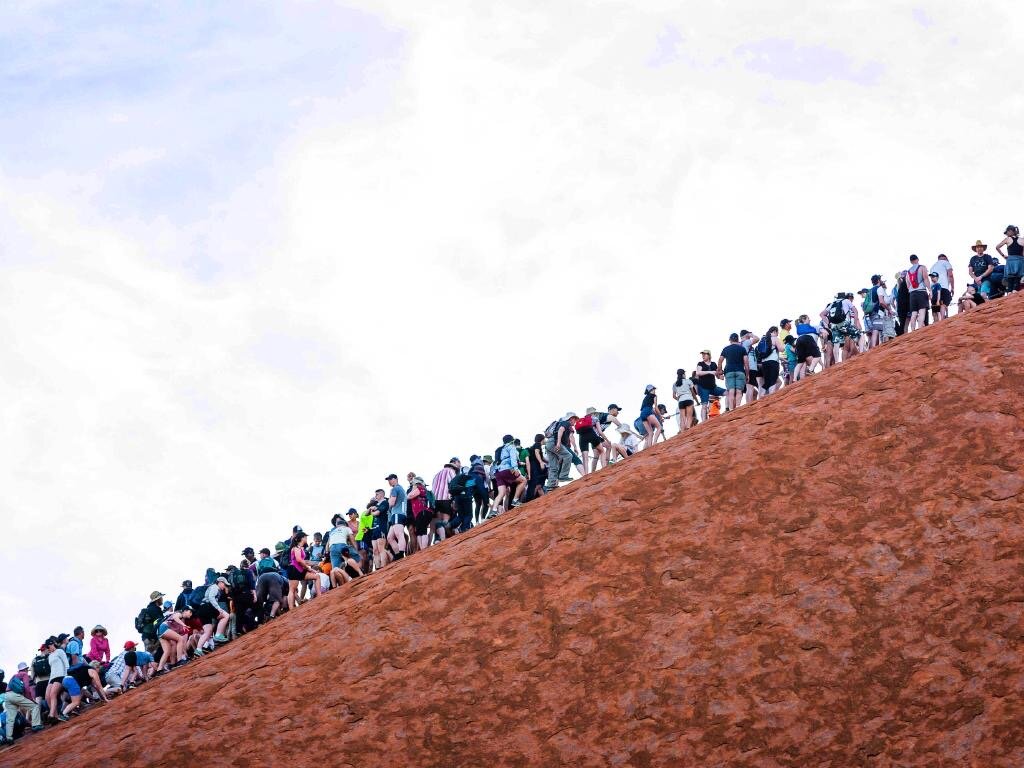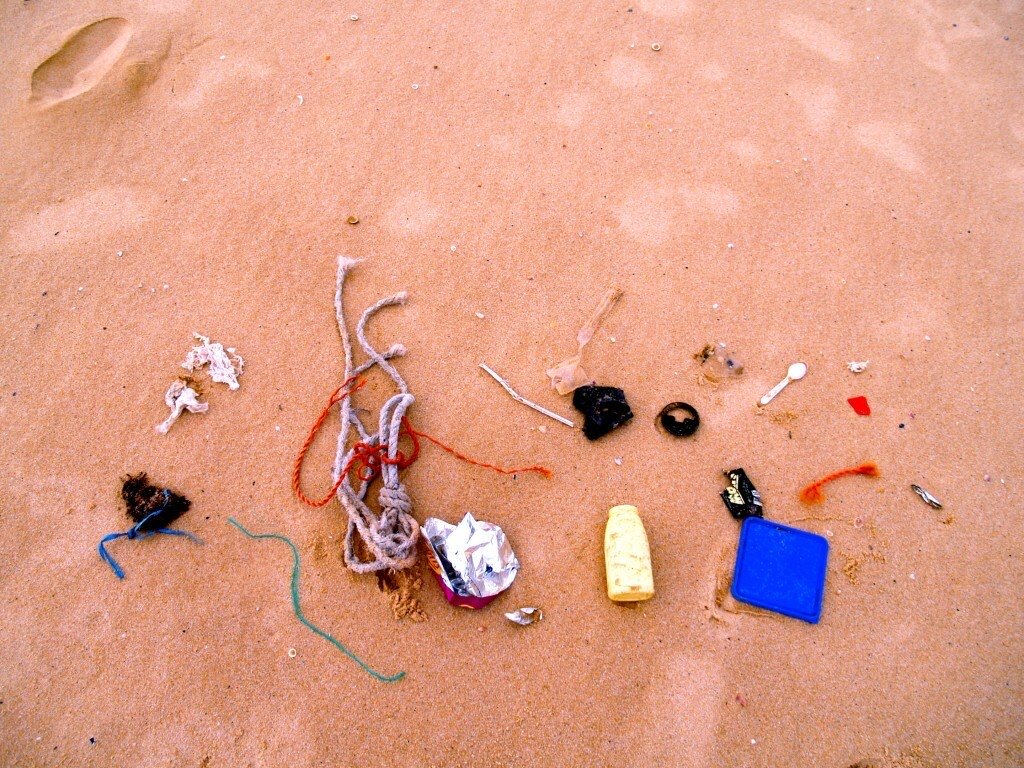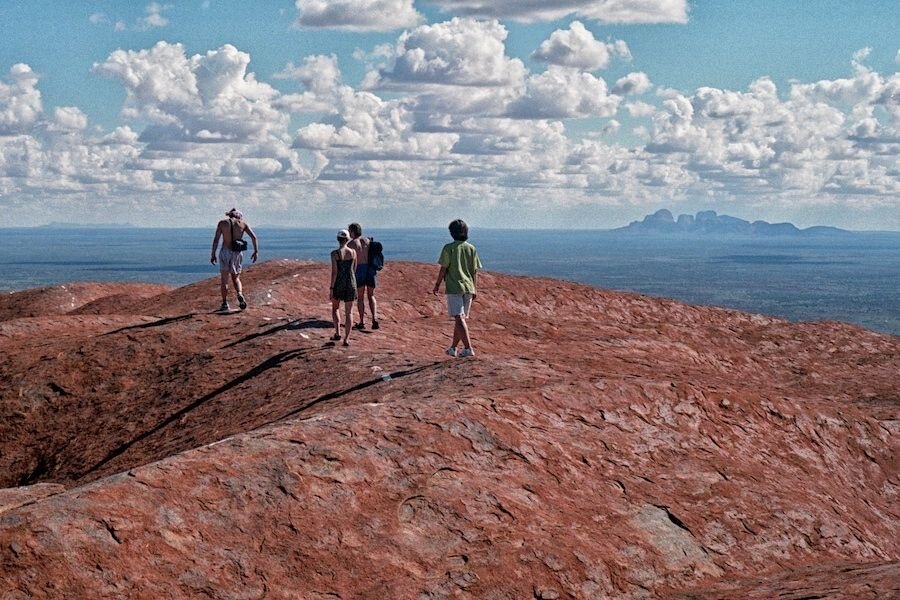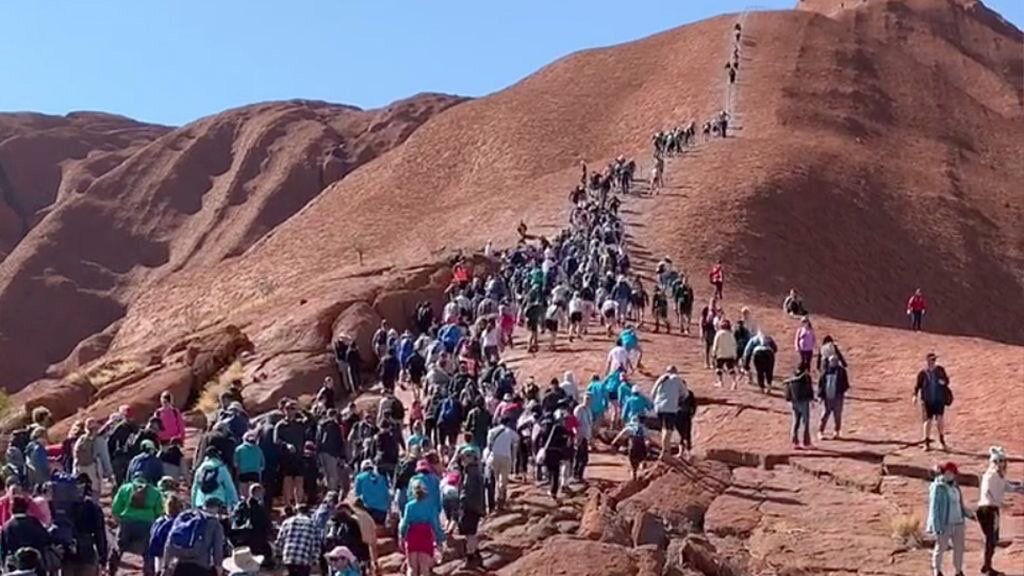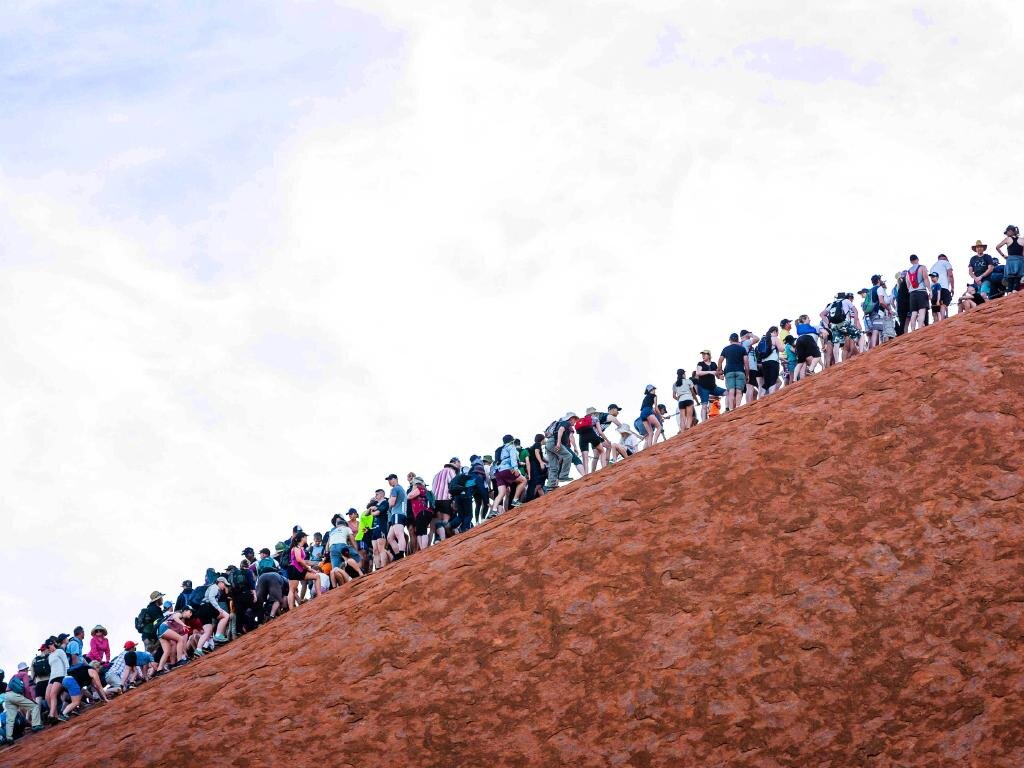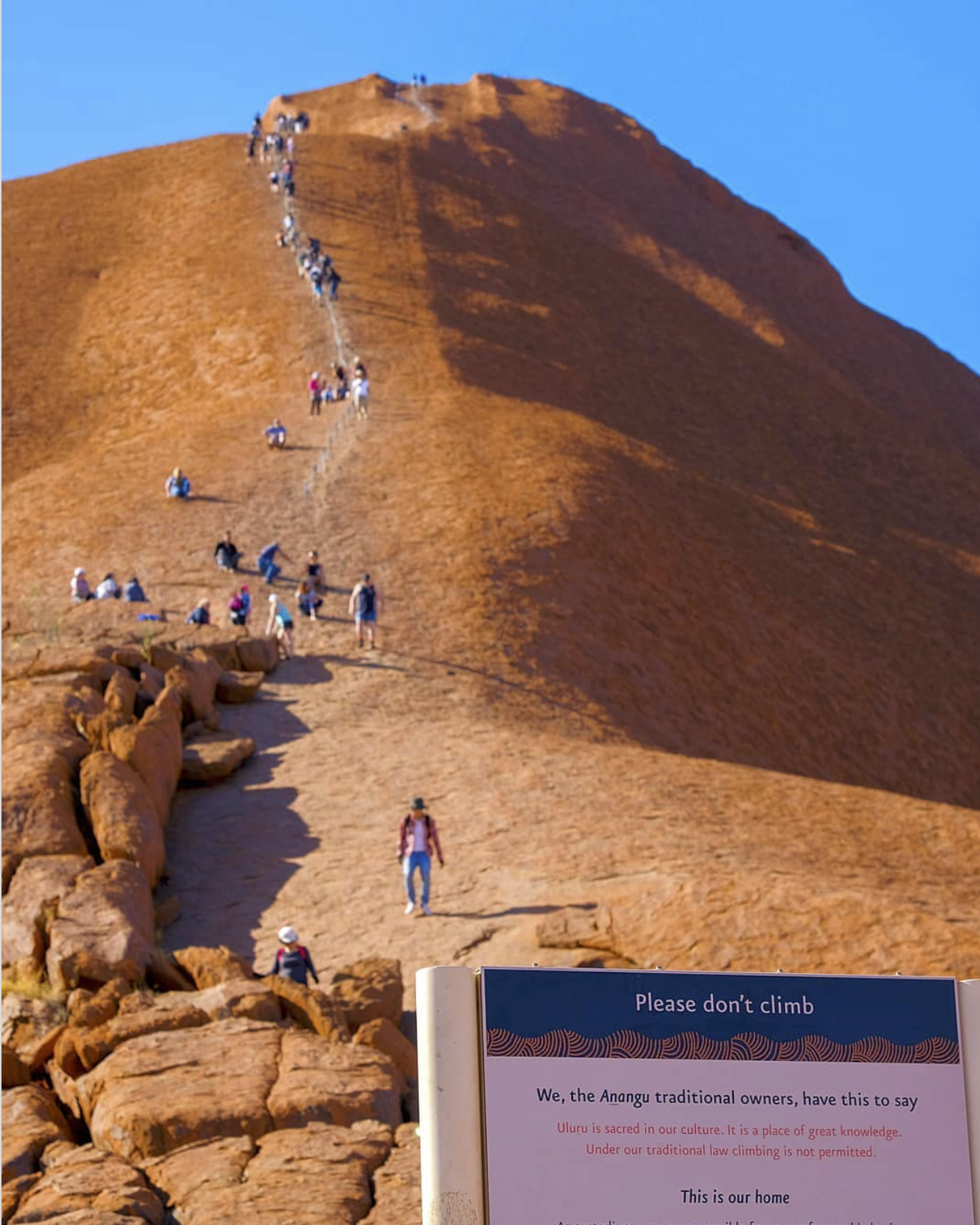A Climbing Ban at Uluru Ends a Chapter
Huge crowds made last-minute bids for the summit of Uluru as the countdown to a long-awaited ban on climbing entered its final days – but the monolith in central Australia is now closed to hikers.
The restrictions, imposed from Saturday, October 26, 2019 – 34 years to the day that the land on which the sacred rock sits was handed back to its traditional aboriginal owners, has led to a flood of visitors to Uluru-Kata Tjuta National Park, many intent on summiting Uluru (formerly known as Ayers Rock) before it became illegal to do so.
As the climb was closed, a new sign was unveiled at the entrance that read “Permanent closure”. As the ban neared, the park has seen a 20 per cent rise in arrivals in the last year. While some cite the growth as an indicator that tourism will continue to flourish, others say it is a sign of “nauseating” disrespect.
Aboriginal Australians regard the rock as sacred and for decades have called for tourists to stop setting foot on its slopes. It is estimated around 1,000 people a day have been climbing the rock, up from roughly 135 in 2015.
The climb has long been an issue at the park with littering an issue as well as human excrement in the water pools on the rock. The toxic levels of excrement have decimated a rare species of shrimp that was unique to the park.
Whilst the climbing ban marks the end of a chapter for visitors, there are many activities that can still be enjoyed throughout the National Park.
